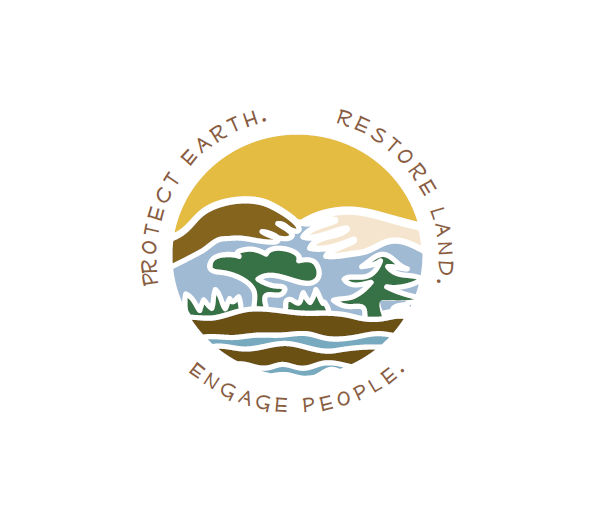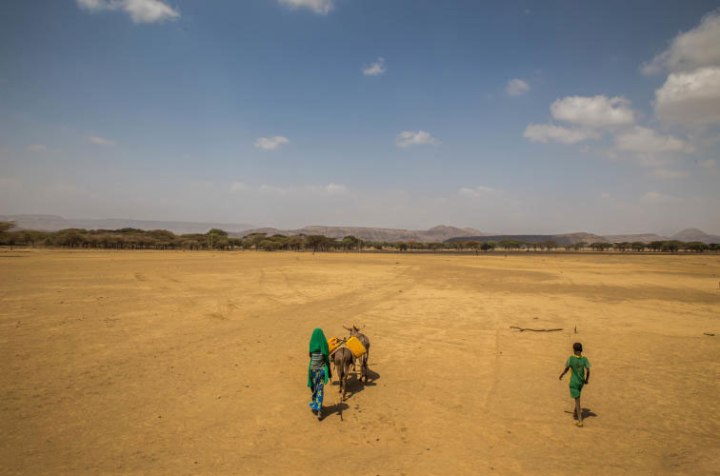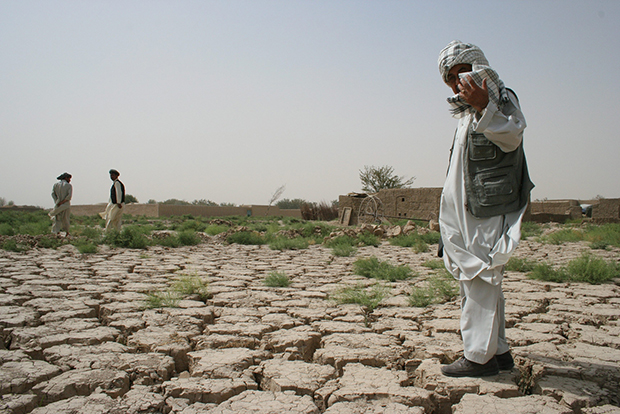The World Day to Combat Desertification and Drought is a United Nations observance each June 17. Its purpose is to highlight ways to prevent desertificationand recover from drought.
There is probably no greater issue than land in the post-2015 Sustainable Development Goals that touches everyone. From the food we eat, to the clothes we wear and the houses we live – it all stems from land resources. In order to “leave no one behind” as proclaimed in the new Sustainable Development Goals, achieving land degradation neutrality needs to be in the forefront to meet our requirements and develop sustainability.
This year’s World Day to Combat Desertification advocates for the importance of inclusive cooperation to restore and rehabilitate degraded land and contribute towards achieving the overall Sustainable Development Goals.
Desertification is a phenomenon that ranks among the greatest environmental challenges of our time. Yet most people haven’t heard of it or don’t understand it.
Although desertification can include the encroachment of sand dunes on land, it doesn’t refer to the advance of deserts. Rather, it is the persistent degradation of dryland ecosystems by human activities — including unsustainable farming, mining, overgrazing and clear-cutting of land — and by climate change.
2016 Theme: Inclusive cooperation for achieving Land Degradation Neutrality
Inclusive cooperation among all actors is key for making Land Degradation Neutrality a fundamental solution for achieving SDGs. The slogan, “Protect Earth. Restore Land. Engage People.” addresses the importance of comprehensive participation and cooperation in working towards achieving Land Degradation Neutrality.
Slogan: Protect Earth. Restore Land. Engage People

Global observance
The global observance event on 17 June 2016 will be held in Beijing, China, hosted by the State Forestry Administration of China (SFA). In 2013, China embarked on the new development strategy, “The Belt and Road,” aiming to strengthen cooperation among countries primarily in Eurasia. Since then, it has been promoting green and low-carbon infrastructure construction in cooperation with the neighboring countries connected by the historic Silk Road.
By organizing the global observance in China, the 2016 WDCD will demonstrate how Land Degradation Neutrality can be a critical element for achieving other sustainable development goals, especially for promotion of inclusive and sustainable economic growth. At the global observance, the host country will announce the “One Belt and One Road Joint Action to Combating Desertification Initiative” together with interested countries and stakeholders.
In 1994, the United Nations General Assembly declared June 17 the World Day to Combat Desertification and Drought to promote public awareness of the issue, and the implementation of the United Nations Convention to Combat Desertification (UNCCD) in those countries experiencing serious drought and/or desertification, particularly in Africa.
Nearly 800 million people are chronically undernourished as a direct consequence of land degradation, declining soil, fertility, unsustainable water use, drought and biodiversity loss, requiring long-term solutions to help communities increase resilience to climate change, United Nations Secretary-General Ban Ki-moon declared today.
“The livelihoods and well-being of hundreds of millions of people are at stake,” the Secretary-General said in his message to mark the World Day to Combat Desertification, whose theme this year is ‘Protect Earth. Restore land. Engage people.’
“Over the next 25 years, land degradation could reduce global food productivity by as much as 12 per cent, leading to a 30 per cent increase in world food prices,” he added.
Ranking among the greatest environmental challenges of our time, desertification is a phenomenon that refers to the persistent degradation of dryland ecosystems by human activities – including unsustainable farming, mining, overgazing and clear-cutting of land – and by climate change.
The Day – which is observed annually on 17 June – is intended to promote public awareness of the issues of desertification and drought, and the implementation of the UN Convention to Combat Desertification (UNCCD) in those countries experiencing serious drought and/or desertification.

In his message, the Secretary-General emphasized that more than 50 per cent of agricultural land is moderately or severely degraded, with 12 million hectares lost to production each year.
“Desertification, land degradation, drought and climate change are interconnected. As a result of land degradation and climate change, the severity and frequency of droughts have been increasing, along with floods and extreme temperatures,” he said.
The Secretary-General emphasized that without a long-term solution, desertification and land degradation will not only affect food supply but lead to increased migration and threaten the stability of many nations and regions.
“This is why world leaders made land degradation neutrality one of the targets of the Sustainable Development Goals [SDGs]. That means rehabilitating at least 12 million hectares of degraded land a year,” he said.
One important approach towards achieving that goal is sustainable, climate-smart agriculture, Mr. Ban said. That will help communities build resilience to climate change, while also supporting mitigation by taking carbon from the atmosphere and putting it back in the soil.
“The transition to sustainable agriculture will also alleviate poverty and generate employment, especially among the world’s poorest. By 2050, it could create some 200 million jobs across the entire food production system,” the UN chief said.
“On this Day, I urge cooperation among all actors to help achieve land degradation neutrality as part of a broader effort to achieve the Sustainable Development Goals and build a future of dignity and opportunity for all,” he added.
In another message to mark the Day, Irina Bokova, the Director-General of the UN Educational, Scientific and Cultural Organization (UNESCO), underscored that desertification is a threat to both arid and non-arid regions, where land over-exploitation, including intensive farming, forest exploitation for fuel and timber and overgrazing have turned fertile soils into sterile land.
“Extreme weather events – like droughts, winds, floods and climate disruptions – are amplifying the effects and adding new causes to the degradation cycle,” said Ms. Bokova.
“The stakes are high – this is why the goal of achieving land degradation neutrality is so important. This is set out in Target 15.3 of the new Sustainable Development Goals, to maintain and even improve the amount of healthy and productive land resources,” she added.
The Director-General highlighted that the UNESCO Man and the Biosphere Programme, International Hydrological Programme and Global Action Programme on Education for Sustainable Development are working to engage people in sustainable land management practices and agro-forestry, in developing green economies, in consuming responsibly, and in restoring ecosystems.
“Desertification is not always irreversible. Land restoration is the ultimate tool, and UNESCO is determined to do everything to restore our ecosystems, as was featured during the World Congress of Biosphere Reserves, held in Lima, in March 2016,” Ms. Bokova said.
“Desertification is a global threat that requires global action – this must start with each of us, with our deeper engagement to protecting our planet for all to share,” she added.

For her part, UNCCD Executive Secretary Monique Barbut emphasized that land degradation neutrality should be a top policy goal for every nation that values freedom and choice.
“Conserving land and restoring that which is degraded back to health is not a benefit that only flows to the billions of people who eke out a living directly from the land,” Ms. Barbut said.
“It is a vote to safeguard our own freedoms of choice, and those of our children. It is also a moral standard against which we may well be judged by history,” she added.
The Executive Secretary also noted that the inclination to degrade new land instead of fixing and re-using the land that is already degraded means that future generations cannot benefit from the same resources.
“The rights we claim to enjoy these land resources come with a heavy moral obligation to manage them well. More so, as we may be, literally, the last generation that can significantly slow down the accelerated loss of the land resources left,” Ms. Barbut said.
“This generation – our generation – has the time, human, knowledge and financial means to reverse these trends, and restore a vast amount of the degraded lands. But we must work together,” she stressed.
Facts and figures
- 2.6 billion people depend directly on agriculture, but 52% of the land used for agriculture is moderately or severely affected by soil degradation.
- Land degradation affects 1,5 billion people globally.
- Arable land loss estimated at 30 to 35 times the historical rate.
- Due to drought and desertification each year 12 million hectares are lost (23 hectares/minute!), where 20 million tons of grain could have been grown.
- 74% of the poor (42% of the very and 32% of the moderately poor) are
directly affected by land degradation globally.Source: UNCCD Brochure
Without a long-term solution, desertification and land degradation will not only affect food supply but lead to increased migration and threaten the stability of many nations and regions. This is why world leaders made land degradation neutrality one of the targets of the Sustainable Development Goals.
UN Secretary-General Ban Ki-moon
In order to have a safe and sustainable future for ourselves and our upcoming generations, the following measures need to be taken:
- Reforestation and tree regeneration
- Water management — saving, reuse of treated water, rainwater harvesting, desalination, or direct use of seawater for salt-loving plants
- Fixating the soil through the use of sand fences, shelter belts, woodlots and windbreaks
- Enrichment and hyper-fertilizing of soil through planting
- Farmer Managed Natural Regeneration (FMNR), enabling native sprouting tree growth through selective pruning of shrub shoots. The residue from pruned tress can be used to provide mulching for fields thus increasing soil water retention and reducing evaporation.
Afterall, its our future.
Protect Earth. Restore Land. Engage People
Here is a video that summarises th article in less than two minutes.


